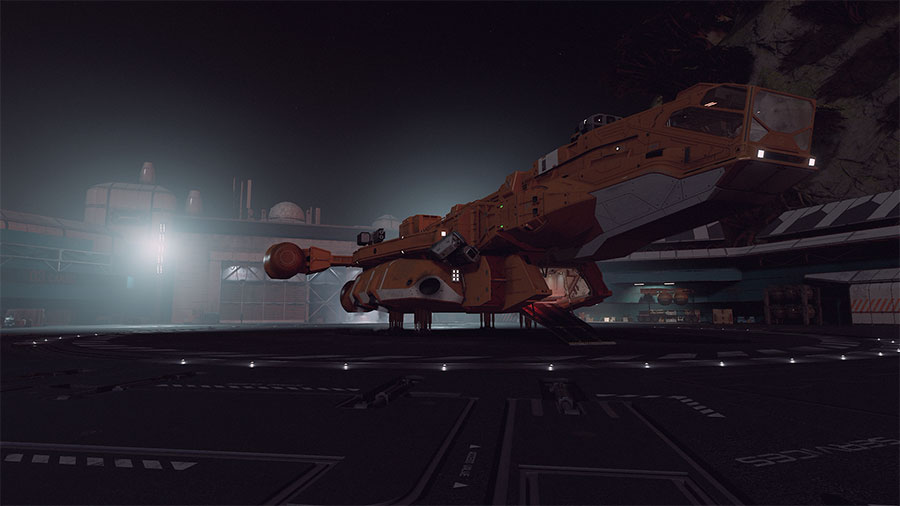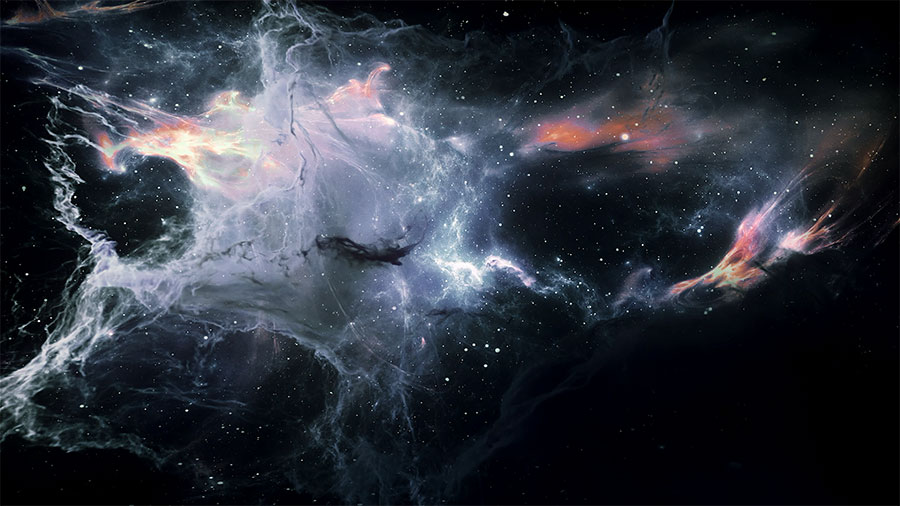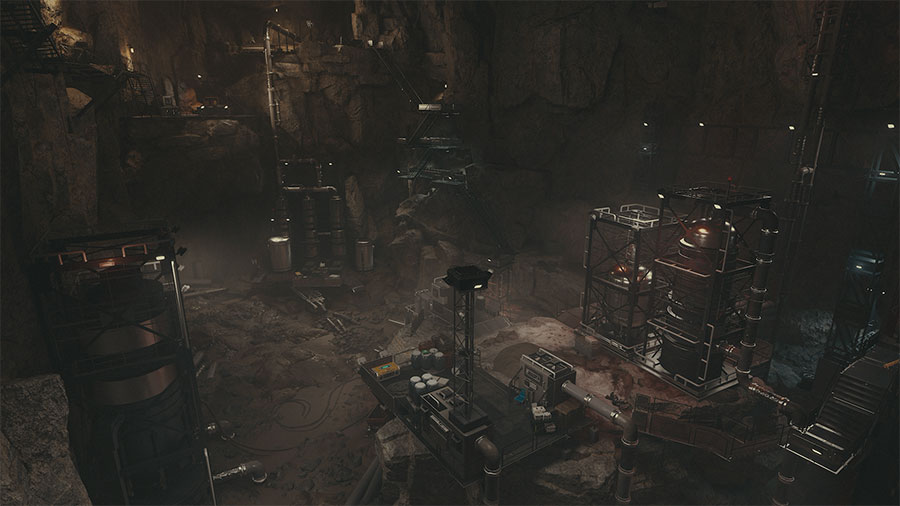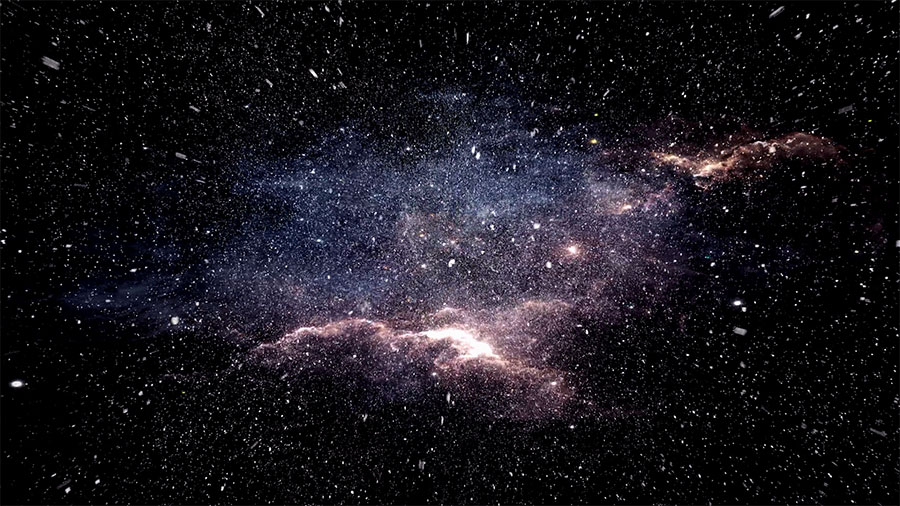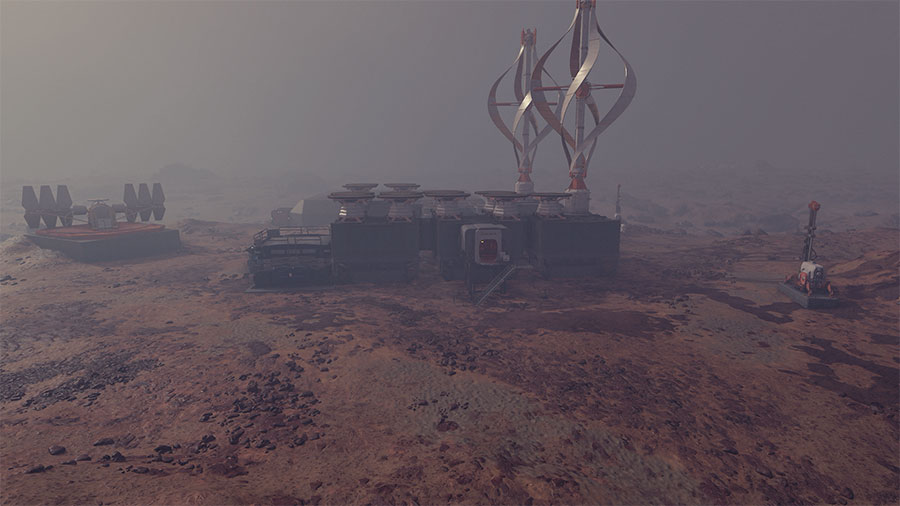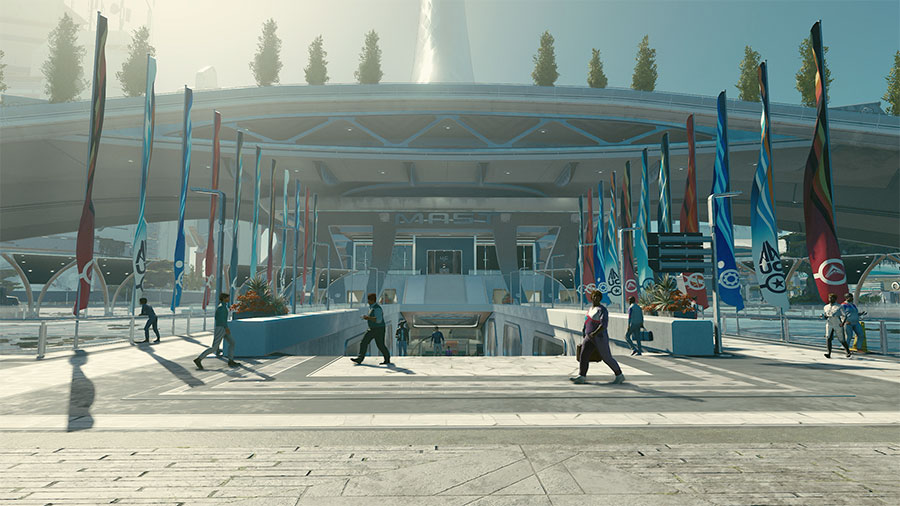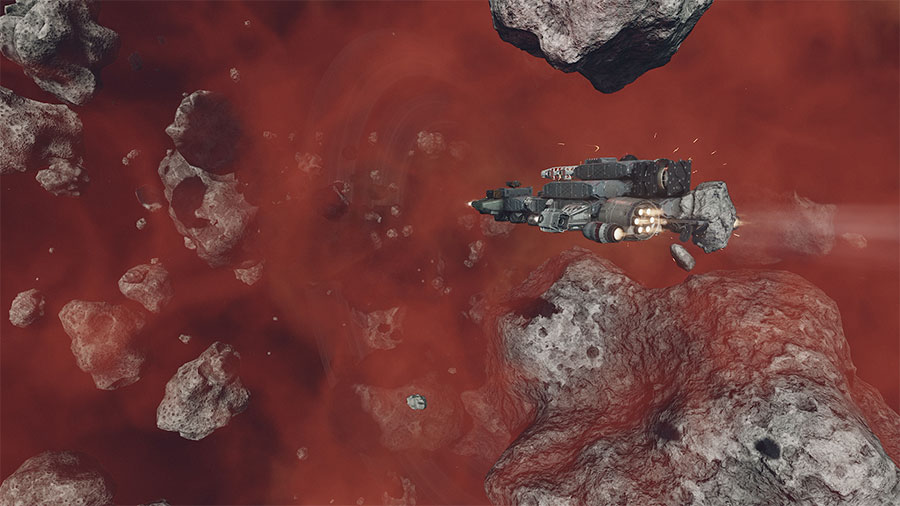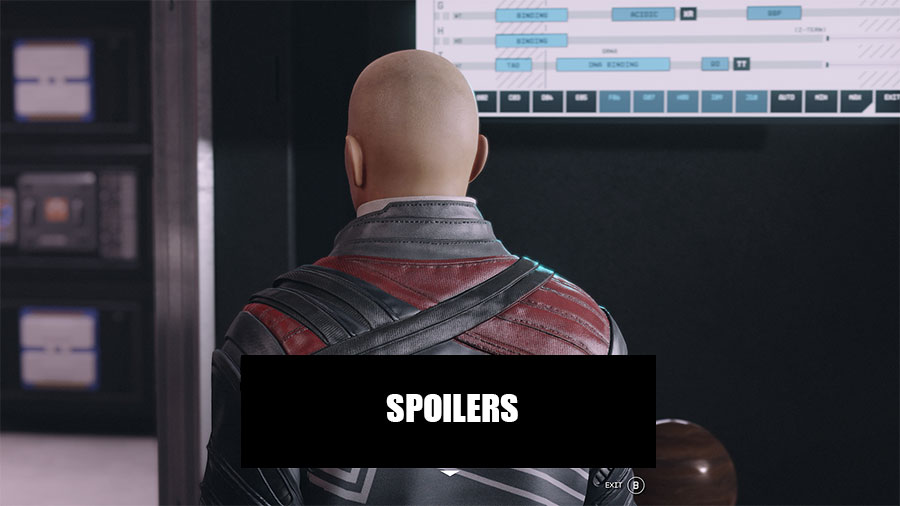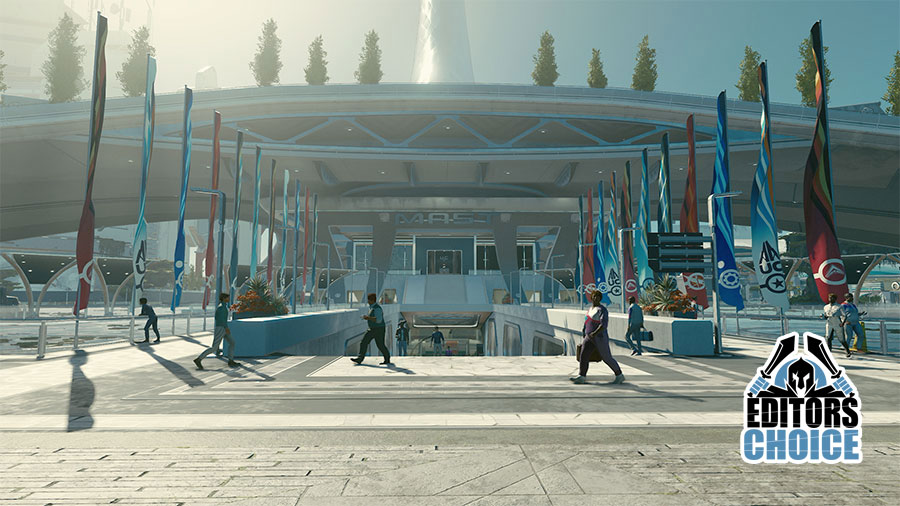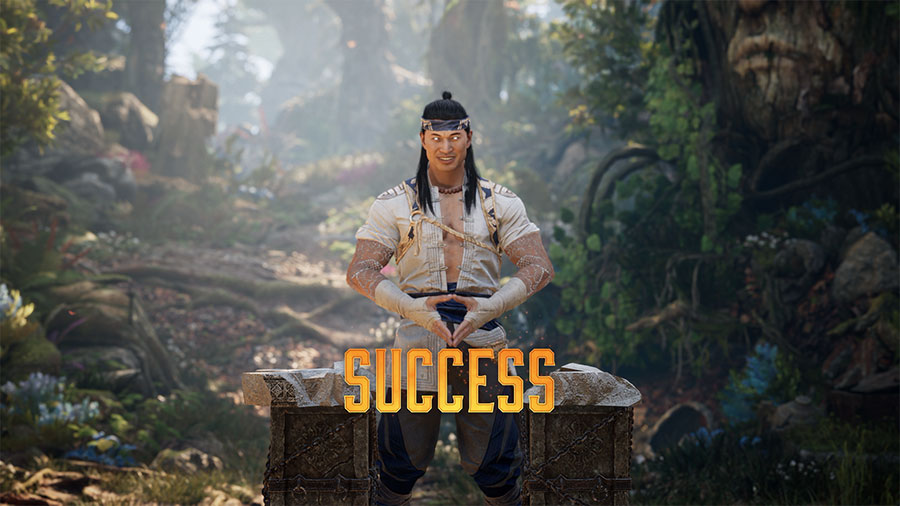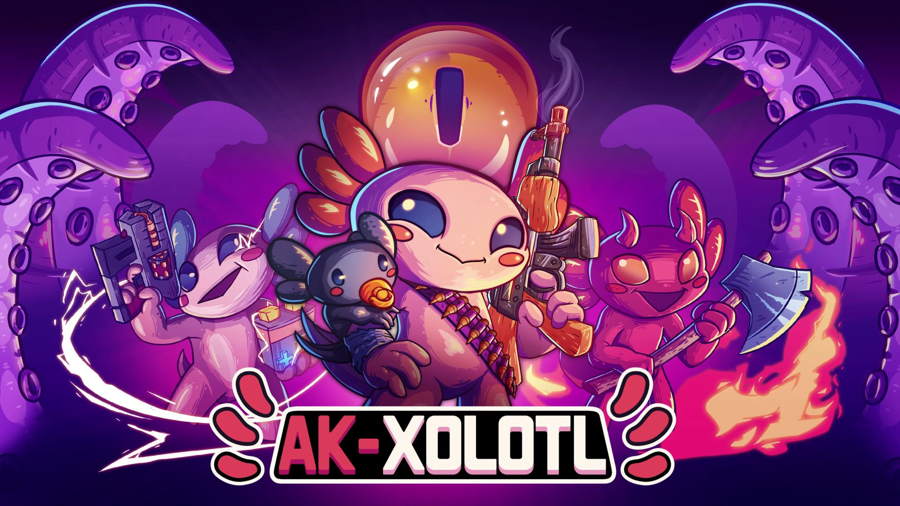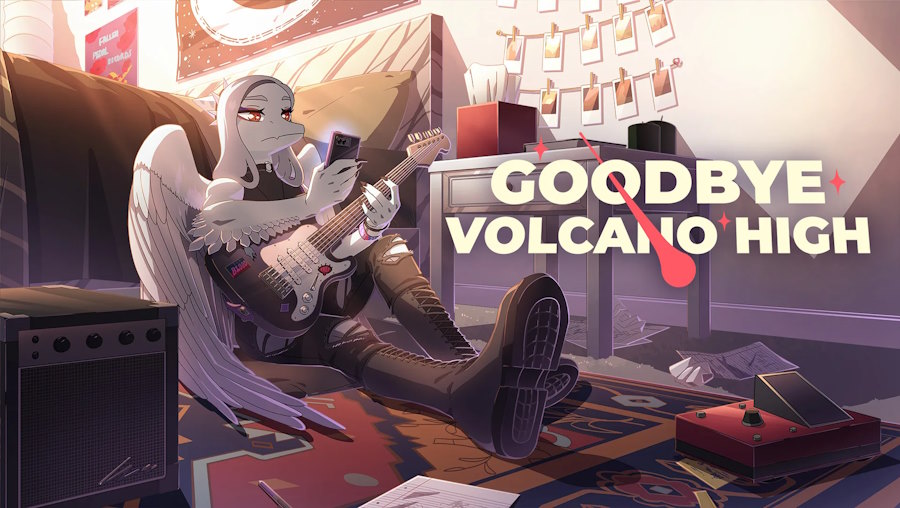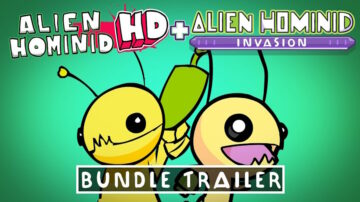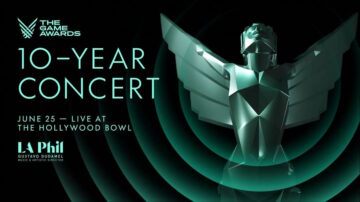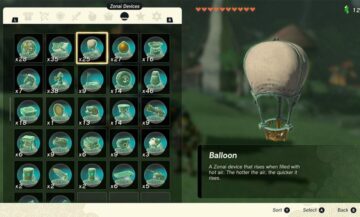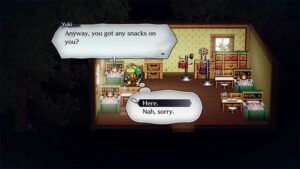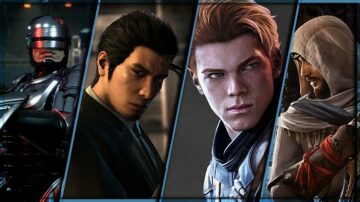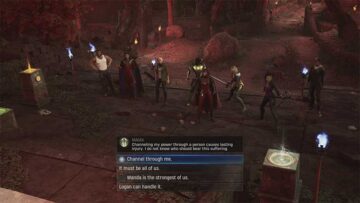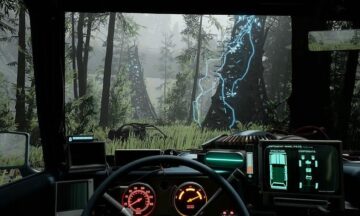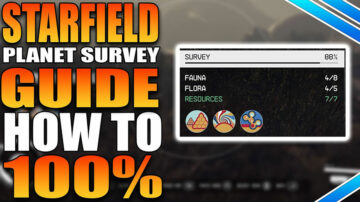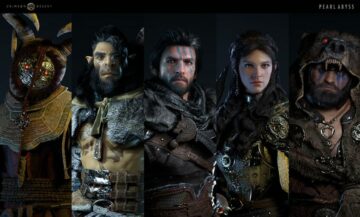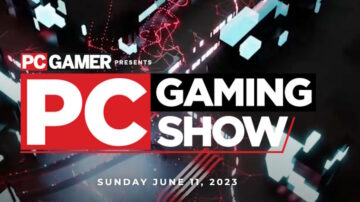Overall – 95%
95%
Simply put, Starfield is Bethesda’s greatest-ever RPG. The living, breathing universe they have created is one of the most impressive in the gaming space and the sound effects and musical score push the immersion to near perfection. If only I could stop speaking to the back of NPC’s heads.
Starfield was not only one of the most anticipated games of the year, it was one of the most anticipated games of a generation. Building on some of the most successful franchises in modern history, with the likes of Fallout and The Elder Scrolls under their belt, Bethesda looks to brave new skies with their first new IP release in a quarter of a century.
To say expectations were high would be a huge understatement. One of the biggest and most beloved AAA developers of the modern era tackling one of the most expansive and limitless genres imaginable, the exploration of space. The wait is over, the game is here, and boy was it worth the wait.
Starfield Review
Starfield is an odd game. Elder Scrolls, Fallout; I could recommend those to any RPG fan and feel confident the vast majority will have a fantastic time. I’m not sure the same can be said for Starfield. Some may get lost on the way, distracted by subsystem.
If you’ve been keeping up with the discourse surrounding Starfield, you’ve likely heard that the game suffers from a poor start, a prologue that disappoints when compared to the epic scenes of Oblivion and Skyrim, and while that may be the case for some, it’s not necessarily through a fault of the game itself. During my early hours of play, I was disappointed. Everything felt lackluster and outdated, lacking that Bethesda spark that has made their games magical for me since my early years in Daggerfall.
I finished the introductory scene, which was brief, and involved mining some rocks and shooting some space scum, and then I did what I always do when a sandbox world is placed at my feet: I went and got lost. In Elder Scrolls, I’d run for hours, gathering materials, speaking to NPCs, and discovering villages and caves. Fallout, same deal, just in a slightly more depressing environment. In Starfield, I took my ship to space and started landing on random planets with the coolest-sounding names.
Starfield’s galaxy is filled with barren planets, floating rocks in deep space that, simply put, are glorified resource nodes, but they beckon with the promise of maybe finding something special. Their primary function, at least mechanically, is to offer resources and materials for players to use in crafting and base-building, one giant ore node. In most games, that would be enough, that singular function would make sense. In a Bethesda game, you expect more.
And in reality, that’s what you get. Each of these barren planets hides several points of interest to investigate and explore. Sometimes it’s some exotic flora or fauna, other times it’s a frozen-over research lab or a heavily guarded encampment. You don’t need to explore many of these planets to find identical locations, objectives, and rewards, but this was never designed to be the main draw in Starfield and to a lot of the people complaining about the lack of incentive to explore these planets, I feel like you’re playing the game wrong. Sometimes, to give players something they want, you need to throw in something they don’t. The game is set 300 years into the future, you can’t colonize that much in such a short amount of time. It’s a necessary element, within the timeframe and setting the developers wanted to achieve, to have that level of nothingness.
That’s a strange thing to say about a sandbox environment, especially a Bethesda sandbox environment. This is a studio that puts out games where players have endless hours of fun cramming 20,000 potatoes into an airlock or watching endless cheese wheels roll down a mountain, but in reality, you don’t have to do any of it. It’s the equivalent of spending an entire day completing Radiant Quests in Skyrim and then complaining about the lack of content and variety in randomly generated quests…
For some players, exploring these barren landscapes, watching in awe at the realistic celestial mechanics of the universe, gathering resources, and occasionally investigating abandoned mines and structures, this is everything they dreamed of in a Bethesda game set in space, and for everyone else, it serves as a grounding and realistic reminder that space is vast, space is empty, space is deadly. It’s not some intergalactic theme park with attractions at every turn. To truly appreciate the colossal scope Starfield puts on the table, you have to understand, that everything has its purpose, everything serves to create one of Bethesda’s most impressive and immersive environments to date.
It took me a few days, and if you follow my Twitter, you’ll see a lot of negative reactions in my early time exploring Starfield, but eventually everything just clicked. This is where I think a lot of the criticism stems from, it takes a while to find your feet, but not in a sense that the game is at fault.
Starfield’s character creation system grounds the player in a universe unlike any other. Choosing various character traits and backgrounds provides your character with roots, a tangible history of events, and experiences to bring into the universe. These are much more than simple bonuses and passive effects. You can be a Xenobiologist, having spent years studying alien species. You can pick a religious background, cementing your place among the stars with those searching for a higher purpose. Or you can go ultra-realistic, start the game with a dream home, and spend much of your better years of life paying off a ridiculous mortgage and dreading the reception every time you go home.
Each of these choices spans throughout the entire game. Conversations I had in the first minutes of the game allowed me to use my Xenobiologist expertise to share my experiences with a passerby, and in the very final quest I completed, I was able to use my expertise to find the best way of eradicating a very dangerous alien species. All too often games throw a character into the fold and while you enjoy the adventure of that universe, the path you follow, seldom does it feel like you truly belong. Starfield’s character creation system, while simple, is incredibly effective at immersing players right from the very start.
Once I began to understand the real purpose of the barren planets of Starfield’s massive universe, I started to delve into the more curated content, side quests, factions; the usual Bethesda suspects. I have been a fan of Bethesda’s work for nearly 30 years, since my first dive into Daggerfall in the mid-90s, and Starfield’s writing has surpassed anything the studio has released to this point. I cannot count the amount of unique quest lines that I got lost in. Immersed from the very beginning to the very end, mostly, but we’ll get to that in a bit.
Following a distress signal I was sent to an outpost on a distant planet. It was dark, fog filled the air, and the corpses of the scientists and guards stationed there littered the floor. Rain was thumping down, visibility wasn’t great. Then I encountered a Terrormorph. These xenomorph-like creatures have been attacking human colonies in the settled systems for years and there it was, ready to eat my face off. This single quest line took me across the star systems, searching for answers. What are they? Where do they come from? It’s a genius combination of the very best of the Alien franchise with a healthy dose of Starship Troopers, culminating in one of the most exciting and rewarding journeys I’ve ever had in an RPG.
And that’s one side quest, just one. When I wasn’t dealing with the Terrormorph threat, I was chasing down war criminals from the Colony Wars, I was climbing the corporate ladder, using stealth and espionage to frame rivals of the infamous Ryujin Industries, and didn’t draw a weapon for over 10 hours. I was infiltrating the space pirates of the Crimson Fleet, working for the authorities in an attempt to bring them down, only for the Crimson Fleet’s promises of a lost treasure to turn me traitor. I was a pirate, an assassin, a thief, a biologist, a soldier, a celebrity, a traitor, a hero, every single quest line is worthy of a feature story of its own and each presents choices and consequences that evolve in unimaginable and exciting ways. And these are just the loosely designed roles the game allows you to take, but in reality, they are limited only by your imagination.
I spent two days exploring the galaxy, looking to find the perfect planet to call home. It’s funny. An entire universe of planets to explore, untold secrets to discover, and I just wanted to find a planet with some water, some nice trees, and some cute animals, so Earth, basically. A universe of potential, and I just want to live here…dull. I found a good spot, not overly pretty, but it had some good resources I needed for expansion. Built some habitats, constructed some extractors, synced up my power grid, assigned my crew, and created enough storage to leave it on autopilot while I venture deeper into the abyss. This was days of exploration and discovery, trial and error, and all of it was good fun. I was an explorer, a colonist, a botanist, a researcher, an invader – seriously, I think I nearly wiped out an entire species of these annoyingly aggressive birds.
Eventually, I was even brave enough to dive into the shipbuilding, which is one of the most impressive features of the game. Sadly, it’s hidden behind quite an intimidating interface and a real lack of explanation or tutorial, but if you can brave the first few hours of stumbling through your own creations, the potential is jaw-dropping. You don’t have to go far to see Millennium Falcons, the Enterprise, hell, even the Planet Express has been created by talented folk in the community.
All those wonderful adventures, memories made, experiences shared, and then the main story stumbles along like a ship without a gravity drive.
It’s a familiar trope. You’re exploring every inch of the galaxy in search of ancient alien artifacts that hold the promise of revealing the secrets of the universe, the very fabric of existence. While it starts strong and ends spectacularly, the core component of the main narrative falls short. Between learning more about the alien artifacts, and an incredible cast of companions, you’re sent on expeditions to various planets to seek out these artifacts, and they are all nearly identical. You land on a barren planet, spend a minute running to the location, hover around in a room for two minutes, and leave, that’s it.
This dull and unimaginative routine is repeated over and over, and even the magical-like abilities you unlock can’t undo the feeling of monotony and boredom. Thankfully, this lasts a couple of hours at the most, but it’s an area of the game that is in stark contrast to the otherwise creative quest design. One day, I will take the time to write down my experiences of the end of the story, the mind-blowing finale that leads to the best implementation of a New Game+ mechanic I’ve ever seen, but not today. It’s too soon, and doing so will reveal and ruin a lot of things for a lot of people. Just know this. I have rarely invested more than a few hours into a NG+ and here I am in Starfield, day after day into NG+. If you love Starfield, follow your journey. Complete as much of the game as you can, and then finish the story. The adventure that awaits is nothing short of epic.
Building up to release my primary concern for Starfield was the combat. I’m a huge Elder Scrolls fan and while I enjoy Fallout, I never liked the combat system much. The guns didn’t feel great, the movement floaty, it just never felt right to me. A stark contrast to The Elder Scrolls, where I felt every swing of a blade, every casting of a spell.
Starfield’s combat is in the upper echelon of FPS design and a standout in an RPG game. The guns look and feel incredible. Every shot is felt, every boost of the jetpack is exciting, and every combat encounter is thrilling and rewarding. The combat system is so good that if you are unfortunate enough to run into some duplicate content it doesn’t matter. Once the bullets start flying, it’s just endless fun. Over 150 hours in the game, I have not avoided a single fight through fatigue or loss of interest, something Elder Scrolls couldn’t even manage after that many hours. Quite the contrary. When a random ship approached me and asked if I was looking to extend my spaceship warranty, I was all too eager to enjoy the combat system once more.
Bethesda’s greatest writing to date. An absolutely fantastic cast of characters and companions, some of the most memorable in the genre, I got you, Barrett. Awesome combat. Everything feels so right. So where does Starfield go wrong? Well, it’s in the little things.
Many years have passed since Skyrim broke records and won hearts. Technology has progressed, and other developers have amazed, but certain aspects of Starfield feel old, dated, and out of place in an otherwise stellar adventure. Following an NPC through a busy city as they give you the low down on your next target, only for the important dialogue to be drowned out by random idiots walking past blurting out irrelevant crap. A heartfelt moment between you and a companion as you share your deepest feelings, whilst talking to the back of their head. Exploring the gorgeous cyberpunk streets of Neon as you walk through 4 loading screens in 15 seconds. Spending yet another 60 seconds waiting on a bench for vendors to restock their cash so you can sell your latest haul. Watching NPCs move in a robotic like state to their resting position, turning 90 degrees before continuing.
Singularly, none of these are huge problems and they have become almost beloved quirks of Bethesda, a bit like my favorite coffee cup that’s chipped on the top. It’s not the best cup anymore, but I loves it. But in a universe where I can sit on the moon and watch a gas giant orbit over the horizon, why am I still talking to the back of a character’s head? With that said, technically, Starfield is the single best release Bethesda has ever had. I never experienced a single serious bug or crash until well over 100 hours, usually issues with loading and saving, another problem that has impacted Bethesda’s titles of yesteryear.
Even now, as I consider my time with Starfield finished, it’s not over. I found some books that gave me the location of London and the Apollo landing site, I’m looking for the Jupiter probe Juno to see how it’s dealing with its new-found purpose, I’m seeking out the GLB-222 Supremacy, a lost ship rumored to hold millions of credits, it’s this endless scope, this fantasy of a living, breathing universe, this is what makes Starfield such a spectacular adventure.
Simply put, Starfield is Bethesda’s greatest-ever RPG. The living, breathing universe they have created is one of the most impressive in the gaming space and the sound effects and musical score push the immersion to near perfection. If only I didn’t have to speak to the back of NPCs head.
This review of Starfield was done on the Xbox Series X. The game was purchased digitally, with the Premium Edition upgrade and Game Pass.
To say expectations were high would be a huge understatement. One of the biggest and most beloved AAA developers of the modern era tackling one of the most expansive and limitless genres imaginable, the exploration of space. The wait is over, the game is here, and boy was it worth the wait.
Mortal Kombat 1 delivers one of the most impressive and exciting storylines I’ve ever experienced in this genre. The voice acting, the facial animations, everything comes together in near-perfect harmony. Fighting is fun, challenging, and rewarding every step of the way. Mortal Kombat 1 is brutally brilliant, and probably the best Mortal Kombat game I’ve ever played.
After being announced earlier this year, AK-Xolotl has finally arrived. Is the game worth checking out during this insane year, or should you spend your time elsewhere? Check out this review and find out.
It’s the end of the world as we know it with the release of KO_OP’s new cinematic narrative adventure Goodbye Volcano High. Should players navigate this troubled time, or is this title a dinosaur?
- SEO Powered Content & PR Distribution. Get Amplified Today.
- PlatoData.Network Vertical Generative Ai. Empower Yourself. Access Here.
- PlatoAiStream. Web3 Intelligence. Knowledge Amplified. Access Here.
- PlatoESG. Carbon, CleanTech, Energy, Environment, Solar, Waste Management. Access Here.
- PlatoHealth. Biotech and Clinical Trials Intelligence. Access Here.
- BlockOffsets. Modernizing Environmental Offset Ownership. Access Here.
- Source: https://www.gamersheroes.com/honest-game-reviews/starfield-review-youre-playing-it-wrong/
- 000
- 1
- 10
- 100
- 11
- 13
- 15
- 150
- 17
- 25
- 27
- 28
- 29
- 30
- 60
- 8
- a
- AAA
- abilities
- able
- About
- absolutely
- access
- achieve
- across
- acting
- Adventure
- after
- aggressive
- alien
- All
- allowed
- allows
- almost
- along
- always
- am
- amazed
- among
- amount
- an
- ancient
- and
- animals
- animations
- announced
- Another
- answers
- anticipated
- any
- anymore
- Anything
- apollo
- appreciate
- ARE
- AREA
- around
- arrived
- as
- aspects
- assigned
- At
- attractions
- Authorities
- autopilot
- AWE
- awesome
- back
- background
- backgrounds
- barren
- BE
- become
- been
- before
- began
- beginning
- behind
- being
- Belong
- beloved
- BEST
- Bethesda
- Better
- between
- Biggest
- BIrds
- Bit
- Blade
- Bonuses
- Books
- Boost
- brave
- breathing
- brilliant
- bring
- Bug
- Building
- built
- busy
- but
- by
- call
- CAN
- case
- Cash
- casting
- Celebrity
- cementing
- certain
- challenging
- character
- characters
- check
- checking
- choices
- Choosing
- cinematic
- City
- Climbing
- Coffee
- combat
- combination
- come
- comes
- community
- companion
- companions
- compared
- complete
- completed
- completing
- component
- concern
- confident
- consequences
- Consider
- content
- continuing
- contrary
- contrast
- conversations
- Core
- corporate
- could
- Couple
- crafting
- Crash
- create
- created
- creation
- Creative
- creatures
- Credits
- Crew
- Criminals
- criticism
- curated
- Cute
- Cyberpunk
- dangerous
- Dark
- date
- day
- days
- deal
- dealing
- deep
- deeper
- Design
- designed
- developers
- dialogue
- DID
- digitally
- Dinosaur
- discourse
- discover
- discovery
- Distant
- distress
- dive
- do
- does
- doing
- done
- down
- draw
- drive
- During
- each
- eager
- earlier
- Early
- early access
- earth
- eat
- edition
- Effective
- effects
- element
- else
- end
- Endless
- ends
- enjoy
- enough
- Enterprise
- entire
- Environment
- environments
- Epic
- equivalent
- era
- error
- especially
- espionage
- even
- events
- eventually
- EVER
- Every
- everyone
- everything
- Evolve
- Exciting
- existence
- exotic
- expansion
- expansive
- expect
- expectations
- experienced
- Experiences
- expertise
- explanation
- exploration
- explore
- explorer
- Exploring
- express
- extend
- fabric
- Face
- facial
- Falcons
- fallout
- familiar
- fan
- FANTASY
- far
- fatigue
- fault
- favorite
- Feature
- Features
- feel
- feelings
- Feet
- few
- fight
- Fighting
- filled
- Final
- finale
- Finally
- find
- finding
- finish
- First
- FLEET
- floor
- Flora
- flying
- follow
- Following
- For
- FPS
- Frame
- Franchise
- Franchises
- from
- fun
- function
- funny
- future
- Galaxy
- game
- Game Pass
- Games
- Gaming
- GAS
- Gathering
- gave
- generated
- generation.
- genius
- Genre
- genres
- Get
- giant
- give
- go
- good
- got
- gravity
- great
- greatest
- Grid
- guns
- had
- Harmony
- has
- Have
- having
- head
- heads
- healthy
- Hearts
- heavily
- here
- Hero
- hidden
- High
- higher
- history
- hold
- Home
- horizon
- hours
- How
- HTTPS
- huge
- human
- i
- identical
- if
- imagination
- immersed
- immersion
- immersive
- implementation
- important
- impressive
- in
- incentive
- incredible
- incredibly
- industries
- inFamous
- interest
- interface
- intimidating
- into
- invested
- investigate
- investigating
- involved
- IP
- Is
- issues
- IT
- ITS
- itself
- journey
- journeys
- jpg
- Jupiter
- just
- keeping
- know
- lack
- ladder
- Land
- Landing
- latest
- leads
- learning
- least
- leave
- Level
- Life
- like
- likely
- likes
- Limited
- limitless
- Line
- lines
- Little
- Live
- living
- location
- locations
- London
- Look
- looking
- looks
- loss
- lost
- lot
- love
- loves
- Low
- made
- main
- Majority
- make
- MAKES
- manage
- many
- massive
- materials
- matter
- May
- maybe
- me
- Mechanics
- memorable
- memories
- Millions
- mines
- Mining
- minute
- minutes
- Modern
- moment
- Moon
- more
- mortal
- Mortal Kombat
- mortgage
- most
- mostly
- move
- movement
- much
- musical
- my
- names
- narrative
- navigate
- Near
- nearly
- necessary
- need
- needed
- negative
- Neon
- net
- never
- New
- new ip
- Next
- Nice
- node
- nodes
- None
- not
- nothing
- now
- NPC
- objectives
- Odd
- of
- off
- offer
- often
- Old
- on
- once
- One
- only
- or
- Orbit
- Other
- otherwise
- out
- over
- own
- pass
- Passive
- Past
- path
- paying
- People
- perfect
- perfection
- pick
- Pirates
- place
- planet
- planets
- plato
- plato data intelligence
- platodata
- platogaming
- play
- played
- player
- players
- Playing
- Point
- Points
- poor
- position
- potential
- power
- Premium
- presents
- pretty
- primary
- probably
- probe
- Problem
- problems
- promise
- promises
- provides
- purchased
- purpose
- push
- put
- quarter
- quest
- quests
- quite
- random
- rarely
- Rating
- reactions
- Ready
- Real
- realistic
- Reality
- reception
- recommend
- records
- release
- released
- research
- resource
- Resources
- resting
- reveal
- revealing
- review
- rewarding
- Rewards
- right
- rivals
- roles
- Roll
- room
- roots
- routine
- RPG
- Run
- running
- s
- Said
- same
- sandbox
- saving
- say
- scene
- scenes
- scientists
- scope
- score
- Search
- secrets
- see
- seek
- seeking
- seen
- seldom
- sell
- sense
- sent
- Series
- seriously
- serves
- set
- setting
- settled
- several
- Share
- shared
- shooting
- Short
- shot
- should
- side
- Simple
- Simply
- since
- single
- Sit
- site
- skies
- Skyrim
- So
- some
- something
- Soon
- sound
- Space
- spans
- speak
- Speaking
- special
- spend
- Spending
- Spot
- Star
- Starfield
- Stars
- Starship
- start
- started
- State
- Stealth
- Steam
- Steam Early Access
- Stellar
- stems
- step
- still
- stop
- storage
- Story
- strong
- structures
- studio
- studying
- successful
- such
- sure
- surpassed
- surrounding
- Swing
- system
- Systems
- table
- tackling
- Take
- takes
- talented
- talking
- tangible
- Target
- technically
- Technology
- than
- that
- The
- The Elder Scrolls
- The Future
- The Game
- the world
- their
- Them
- theme
- then
- there
- These
- they
- thing
- things
- think
- this
- those
- threat
- thrilling
- Through
- Throughout
- time
- timeframe
- times
- Title
- titles
- to
- To Leave
- Today
- together
- too
- took
- top
- trees
- trial
- trial and error
- truly
- turn
- turning
- tutorial
- two
- under
- Understand
- unfortunate
- unimaginable
- unique
- universe
- unlike
- unlock
- until
- Untold
- up
- upgrade
- upper
- use
- using
- usually
- variety
- various
- vast
- ve
- vendors
- venture
- version
- very
- visibility
- Voice
- voice acting
- volcano
- votes
- wait
- waiting
- walk
- walking
- want
- wanted
- war
- was
- Watch
- watching
- Water
- way
- ways
- we
- well
- went
- were
- What
- when
- where
- while
- why
- will
- with
- within
- without
- won
- Work
- working
- world
- worth
- would
- write
- writing
- wrong
- X
- xbox
- xbox series
- Xbox Series X
- year
- years
- yet
- you
- your
- youtube
- zephyrnet
